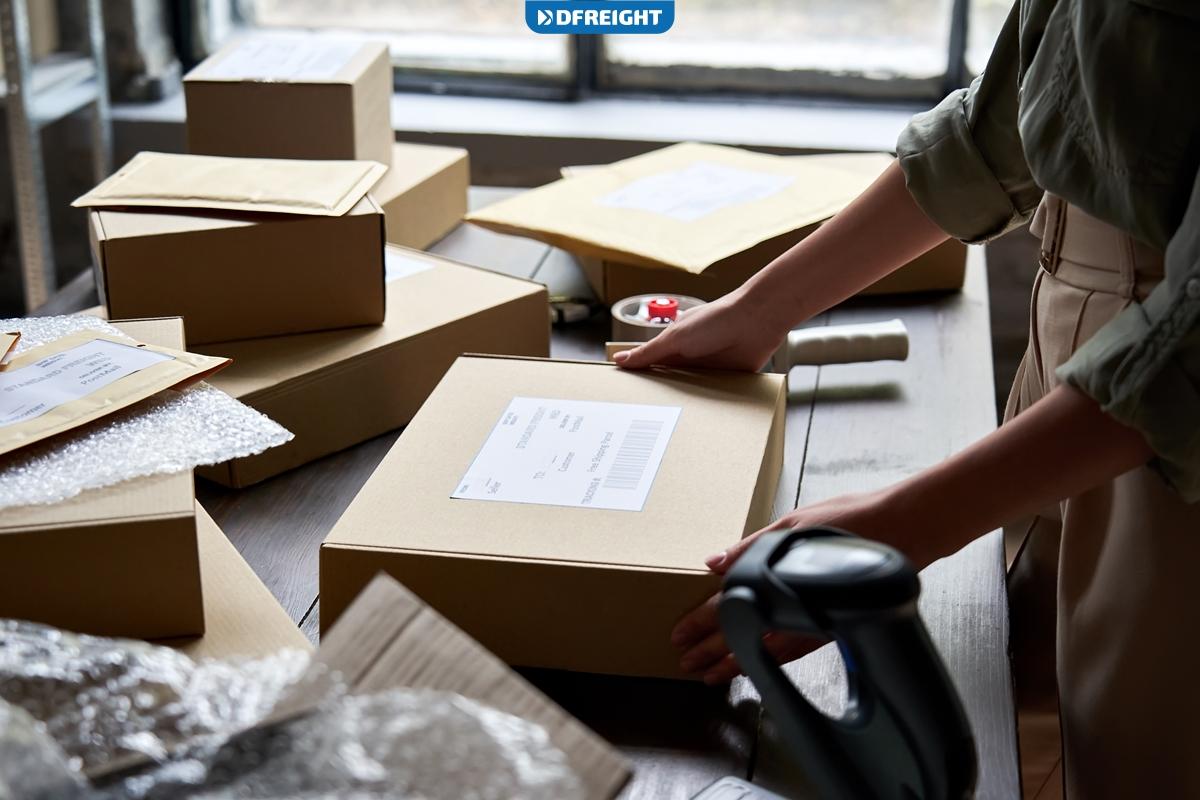There are several different types of business models that companies use to generate revenue and profits. A company’s business model will depend on various factors, including the products or services offered, the target market, and the company’s overall goals. One of the most popular business models is dropshipping. Dropshipping is a great way to start an online business with little up-front investment, and it’s a perfect business model for new e-commerce entrepreneurs. This comprehensive guide will show you everything you need to know about dropshipping, from finding the ideal supplier to marketing your store. By the end of this guide, you’ll have all the information you need to start your own successful dropshipping business.
Table of Contents
What is Dropshipping?
Dropshipping is a business model in which e-commerce entrepreneurs sell products without carrying any inventory. When a store owner receives an order from a customer, they contact the supplier, who will ship the products directly to the customer’s door. Dropshipping apps like Oberlo let you add products from various suppliers into your shop to fuel your product offering.
Why Use Dropshipping?
There are several reasons why you might want to start a dropshipping business:
Low Start-Up Costs: You can launch your own dropshipping business with little up-front investment. You only need a domain name and hosting for your website, and you can get started without spending much money.
No Need to Carry Inventory: One of the most significant advantages of dropshipping is that you don’t need to carry any inventory. When a customer orders a product from your store, the supplier will ship it directly to the customer’s door. You don’t have to worry about storing or shipping products.
Easy to Get Started: Dropshipping is one of the easiest businesses to set up. You can be up and running in just a few days and don’t need any particular skills or experience. All you need is a willingness to learn and some basic business sense.
Location Independent: Dropshipping businesses can be run from anywhere in the world. All you need is an internet connection and a laptop. This makes dropshipping ideal for people who want to run their business from home or anywhere in the world.
Flexible Hours: Dropshipping businesses are also very flexible. You can work as much or as little as you want and set your hours. This makes dropshipping ideal for people who want to be their boss or have a side hustle to supplement their income.
Dropshipping is worth considering whether you’re looking to start an online business or want to make some extra money. It’s a low-risk, high-reward business model that can be very profitable.
Run a Dropshipping Bussiness Step by Step
Dropshipping is the perfect business model for new e-commerce entrepreneurs. It’s simple to set up and manage and doesn’t require a significant up-front investment. You can also run your dropshipping business in your spare time – you don’t need to quit your job to start a successful store. Plus, there are several dropshipping tips you can apply to drive traffic to your store.
If you’re looking for a step-by-step guide on how to start a dropshipping business, you’re in the right place. This guide is designed for entrepreneurs interested in starting their own e-commerce business, specifically on dropshipping. By the end of this guide, you’ll have a clear understanding of how dropshipping works and what you need to do to launch your successful store.
You must take a few key steps to set up your dropshipping business. First, you must find a niche market and select the right products to sell. You’ll also need to create a high-converting online store and build supplier relationships. Finally, you must drive traffic to your store and market your products effectively.
Find a Niche Market and Select the Right Products
The first step to setting up your dropshipping business is finding a niche market and selecting the right products to sell. It’s essential to choose a niche that you’re passionate about, as this will make it easier to market your products and build a loyal customer base. When selecting products, it’s essential to choose items that are in high demand and that you can source from a reliable supplier.
The best way to find a profitable niche is to consider the problems you can solve for your potential customers. For example, if you’re passionate about make-up, you could start a store that sells natural beauty products to customers looking for a more holistic approach to their skincare routine. There are endless dropshipping niche ideas that you can explore. Once you’ve landed on a niche you’re passionate about; it’s time to move on to the next step.
Research Your Competition
Once you’ve chosen your niche, it’s time to research your competition. This step is crucial because it will help you determine what strategies you can use to set your store apart from the competition.
When researching your competition, there are several factors you should take into account, including:
- Their product offering
- Their pricing strategy
- Their marketing strategy
- Their target audience
- Their overall brand identity
By understanding your competition, you’ll be able to make informed decisions about your store. For example, if you notice that most of your competitors are targeting a young, hip audience, you might consider using a similar marketing strategy to reach your target customers.
Create a High-Converting Online Store
Once you’ve selected your niche market and product, your store should be designed with your target customer in mind and easy to navigate. Include high-quality product photos, descriptions, and a compelling call to action.
Build Relationships with Suppliers
Once you’ve chosen your products, it’s time to find a supplier. This step is vital because your supplier will be responsible for manufacturing and shipping your products. There are several things you should take into account when choosing a supplier, including:
- Their location: Ideally, you want to choose a supplier in the same country as your target customers. This way, you can avoid high shipping costs and longer shipping times.
- Their minimum order quantity: Most suppliers have a minimum order quantity (MOQ) that you must meet to place an order. This number can range from a few hundred to a few thousand, so it’s essential to consider this when choosing a supplier.
- Their production time: How long does it take the supplier to manufacture a product? This is important to know because it will affect your shipping times.
- Their shipping costs: How much will it cost to ship the products to your customers?
- Their return policy: What is the supplier’s return policy? This is important to know in case you need to return any products.
You’ll need to build relationships with suppliers to run a successful dropshipping business. When selecting suppliers, choosing those who offer high-quality products and can ship orders promptly is essential. It would help if you also looked for suppliers who offer competitive prices.
Create Your Store
Now that you’ve chosen your products and found a supplier, it’s time to create your store. If you’ve never made an e-commerce store before, don’t worry – it’s easier than you think. You can use several platforms to create your store, including Shopify, BigCommerce, and WooCommerce. All of these platforms are user-friendly and offer a wide range of features, so you’ll be able to find one that meets your needs. Once you’ve chosen a platform, it’s time to choose a domain name and hosting. Your domain name is the address of your website, and it’s what customers will use to find your store.
When choosing a domain name, you want to choose something short, memorable, and relevant to your niche. For example, if you’re selling shoes, you might want to choose a domain name like “shoes.com” or “buy-shoes.com.” Your hosting is what will keep your website up and running.
Now that you’ve chosen a platform and a domain name, it’s time to design your store. This step is vital because your store’s design will significantly affect your conversion rate. When creating your store, there are several factors you should take into account, including:
- Your branding: Your store’s design should be consistent with your brand identity.
- Your target audience: Your store’s design should appeal to your target audience.
- Your niche: Your store’s design should reflect your place.
- Your products: Your store’s design should showcase your products in the best light possible.
Now that you’ve designed your store, it’s time to add your products. This step is crucial because it will give your customers a chance to see what you have to offer. When adding your products, there are several things you should take into account, including:
- Your product photos: Use high-quality images that showcase your products in the best light possible.
- Your product descriptions: Make sure to write compelling product descriptions that highlight the features and benefits of your products.
- Your product pricing: Make sure to price your products competitively.
- Your shipping costs: Include your shipping costs in your product listings.
Set Up Your Payment Processor
Now that you’ve added your products, it’s time to set up your payment processor. This step is essential because it will allow you to accept customer payments. Assuming you would like tips on setting up a payment processor for an online shop:
- Research which payment processor would be the best fit for your business. Consider factors such as ease of use, fees, and compatibility with your shopping cart software.
- Sign up for an account with the chosen payment processor. This usually involves providing personal and business information and setting up a payment method (such as a bank account or credit card).
- Follow the instructions provided by the payment processor to integrate their system with your online shop. This usually involves copying and pasting some code into your shopping cart software.
- Test the payment processor by making a small purchase from your shop. This will help you ensure that everything is set up correctly and that your customers can make purchases without issues.
Start accepting payments from your customers!
Drive Traffic to Your Store
Once your store is set up, and you’ve established relationships with suppliers, it’s time to start driving traffic to your store. There are several ways to do this, including SEO, content marketing, and social media marketing.
Market Your Products Effectively
The final step to setting up your dropshipping business is to market your products effectively. This includes creating compelling product descriptions, using effective keywords, and offering discounts and coupons. You should also develop a sense of urgency by offering limited-time deals and using countdown timers.
Now that you know how to start a dropshipping business, it’s time to start. Use this guide as a roadmap for launching your successful store.
What Are the Disadvantages of Dropshipping?
Dropshipping has a few disadvantages, as it’s not always the perfect solution for everyone.
Low Margins: One of the biggest challenges of dropshipping is making a profit can be difficult. This is because you must compete with other dropshippers selling the same products, and the margins are often meager.
Requires Constant Marketing: Another challenge of dropshipping is that it requires a lot of marketing to be successful. You need to constantly promote your store and your products if you want to make sales.
Requires Good Suppliers: To be successful with dropshipping, you need to find suitable suppliers who can provide you with high-quality products at a reasonable price. This can be challenging, and it can take some time to find qualified suppliers.
Can Be Difficult to Scale: Dropshipping businesses can be challenging to scale. This is because you need to find new suppliers and products as you grow, and you also need to do more marketing to promote your store.
Requires Good Customer Service: Dropshipping businesses also require good customer service. This is because customers can often have questions about the products they’ve ordered, and you need to be able to support them.
Despite these challenges, dropshipping is still a prevalent business model and can be a great way to start your own business. If you’re thinking about starting a dropshipping business, then be sure to check out Oberlo. Oberlo is a dropshipping app that makes it easy to create your store.
Conclusion
Dropshipping is a great way to start an online business with little up-front investment. Following the steps in this guide, you can find a supplier, create a store, and start marketing your products to customers. You can build a successful dropshipping business with hard work and dedication.
Nowadays, everything has gone online, and so did we! DFreight offers online tools that make it easy to get quotes, track your shipments, and more.
How do I know if a supplier is reputable?
There are a few things to look for when evaluating a potential supplier, including:
-Online reviews: You can check sites to read reviews from other entrepreneurs using the supplier.
-Supplier certification: Many dropshipping apps have certification processes to help you find reliable suppliers.
-Communication: A good supplier should be responsive to your questions and inquiries.
What are some popular dropshipping products?
There are dropshipping products in nearly every niche, but some of the most popular include Clothing and fashion accessories, electronics, home decor, and kitchenware.
How does dropshipping work?
Dropshipping works like this:
1. A customer places an order on your online store.
2. The order is forwarded to the supplier.
3. The supplier ships the order directly to the customer.
4. You never see or handle the product.
What are the customs and taxes for dropshipping to customers in Turkey?
Depending on the item’s value, customs duties, and VAT may apply during the shipping to Turkey process. Generally, the customs duties are between 1-20% of the item’s CIF (Cost Insurance Freight) value, and the VAT rate is 18%.














